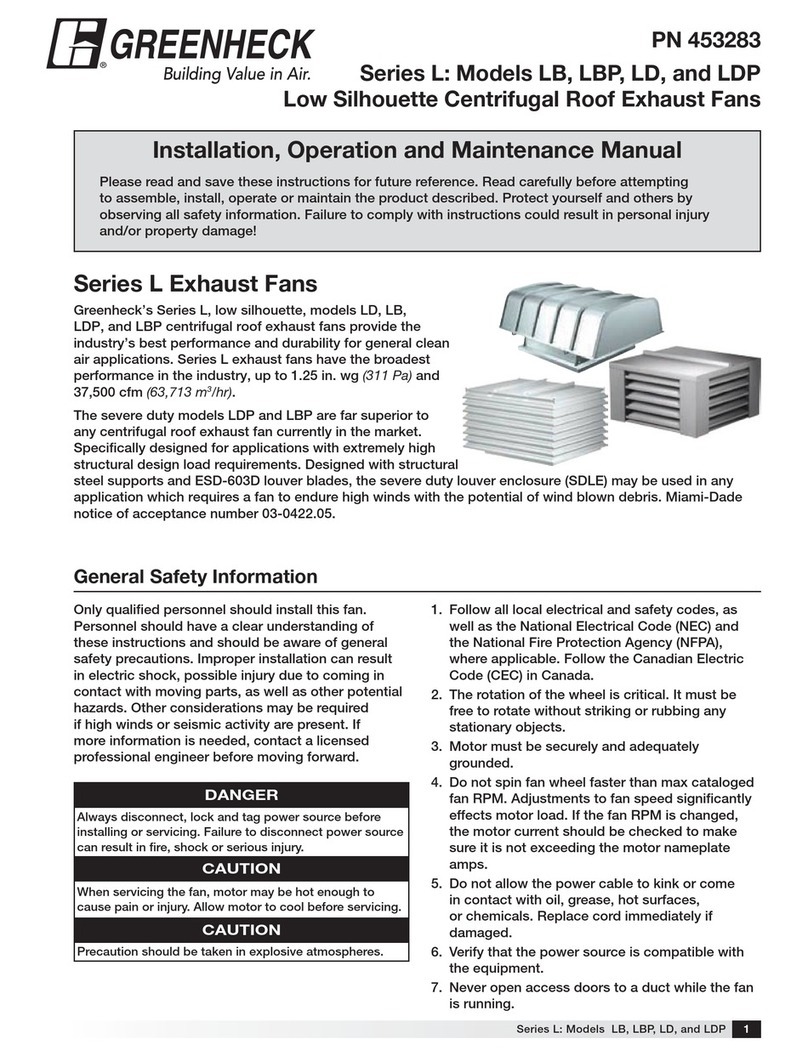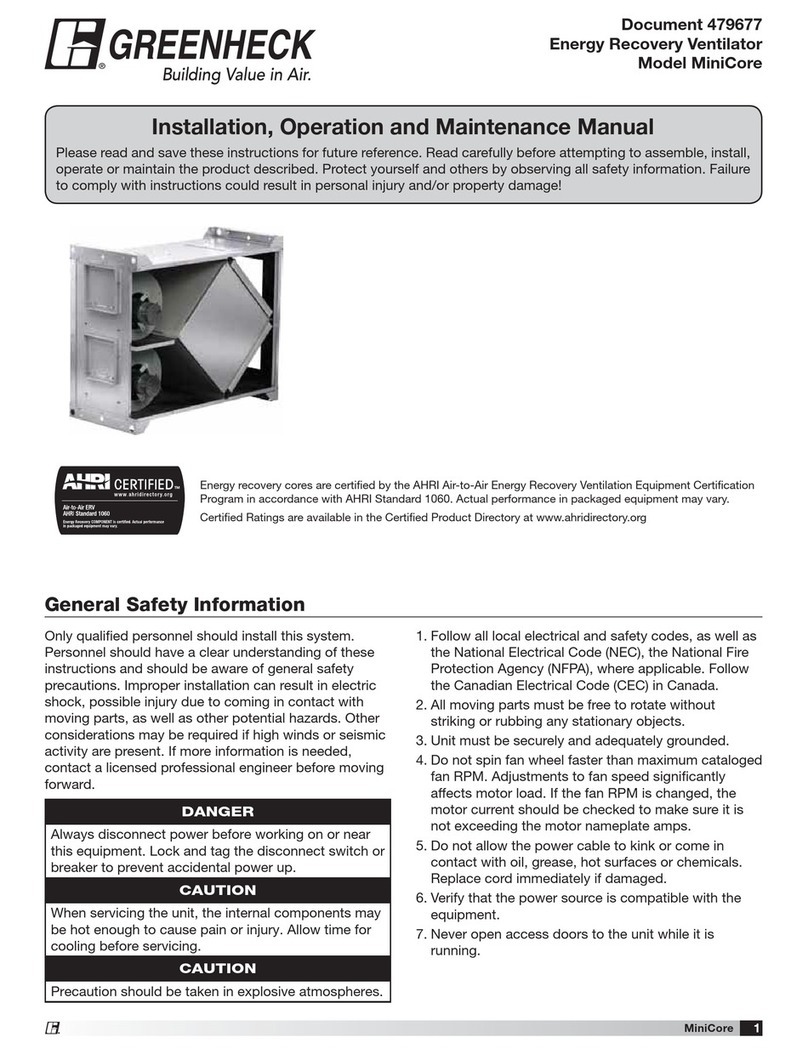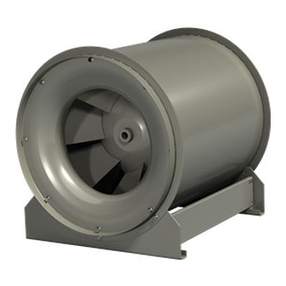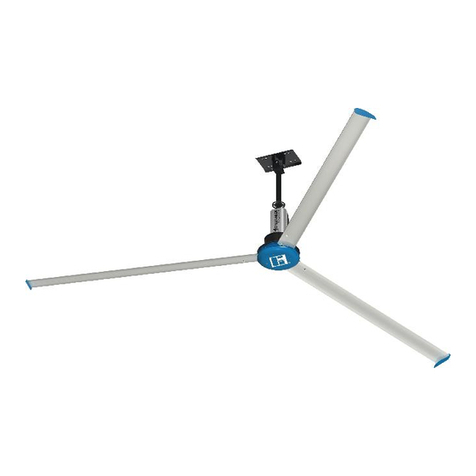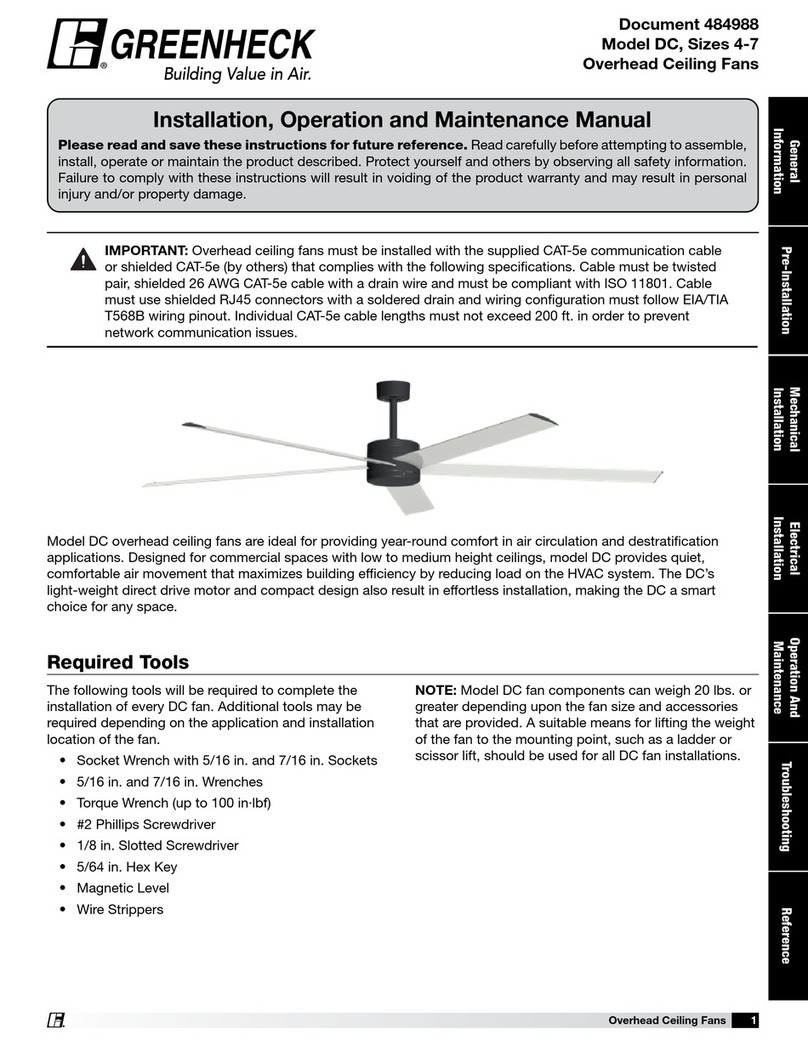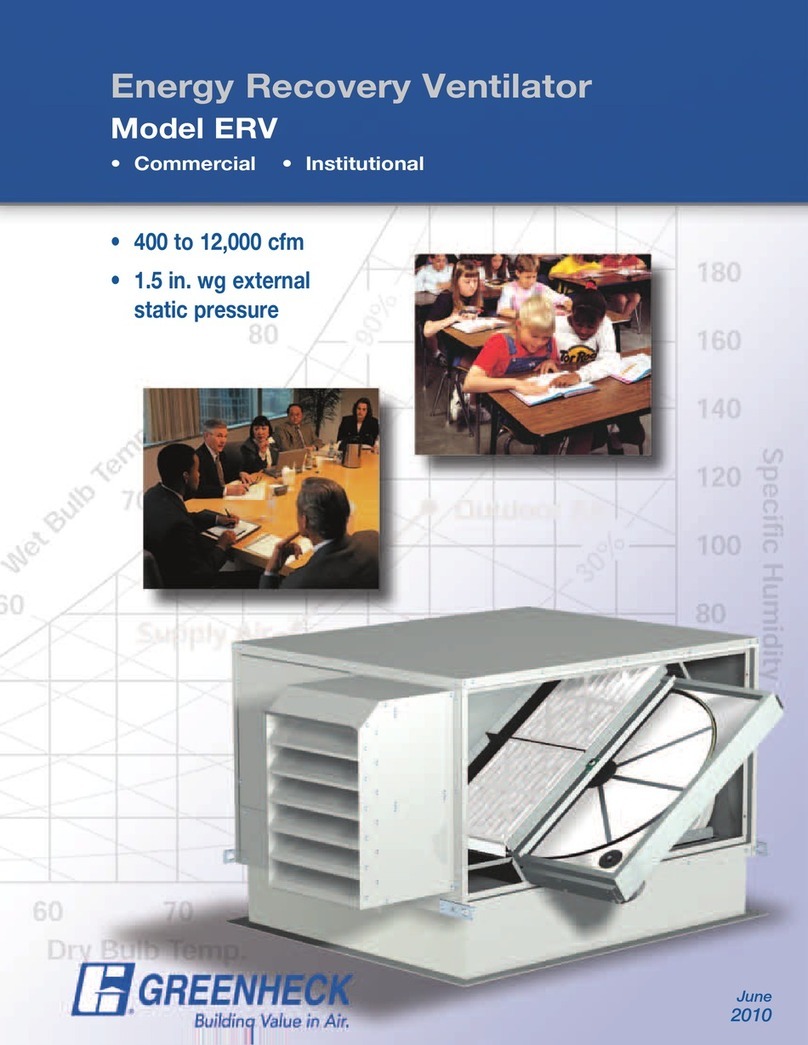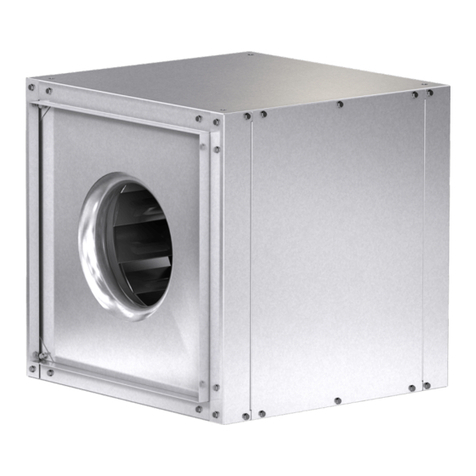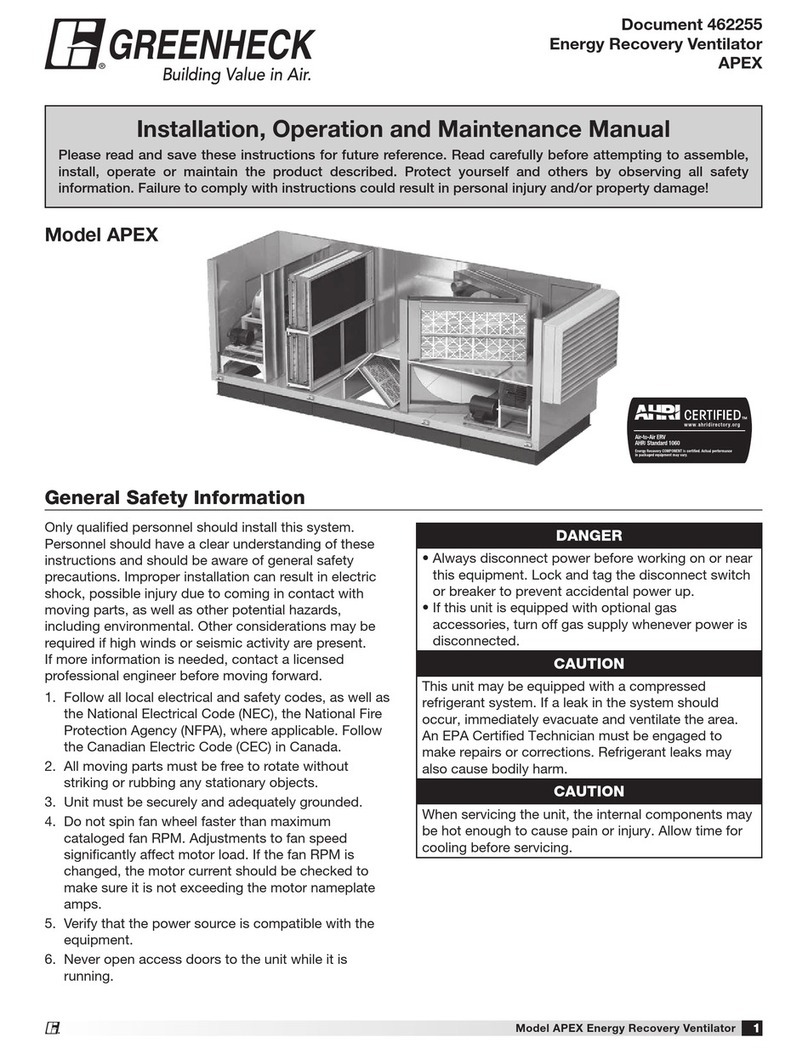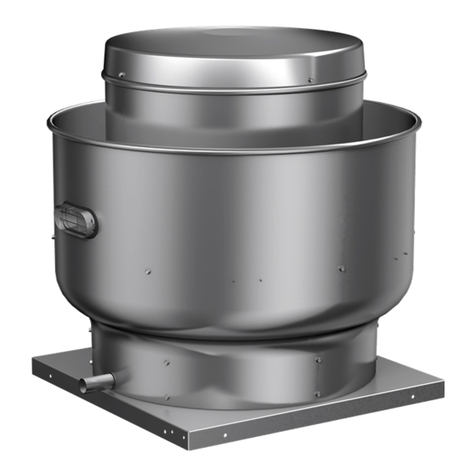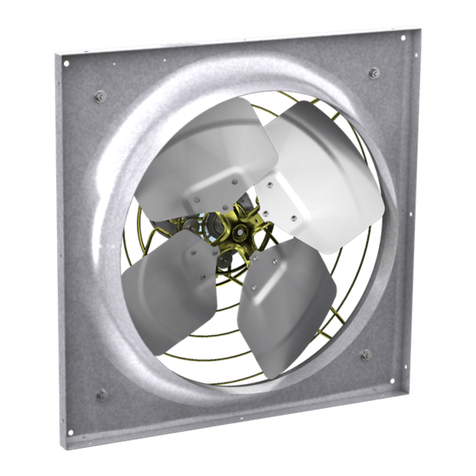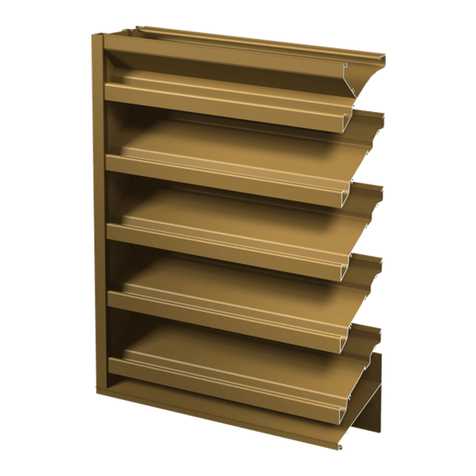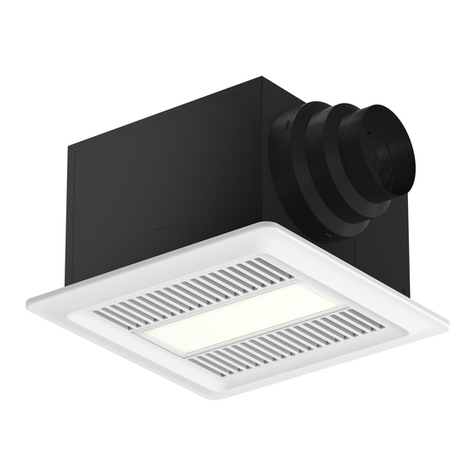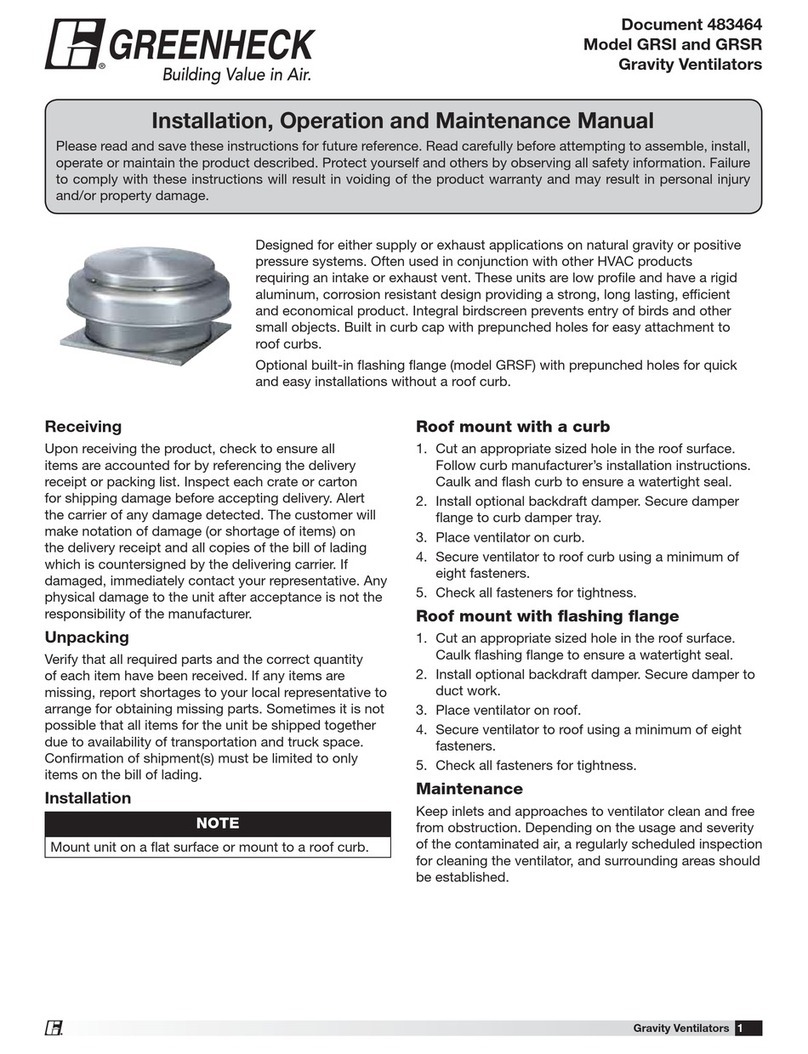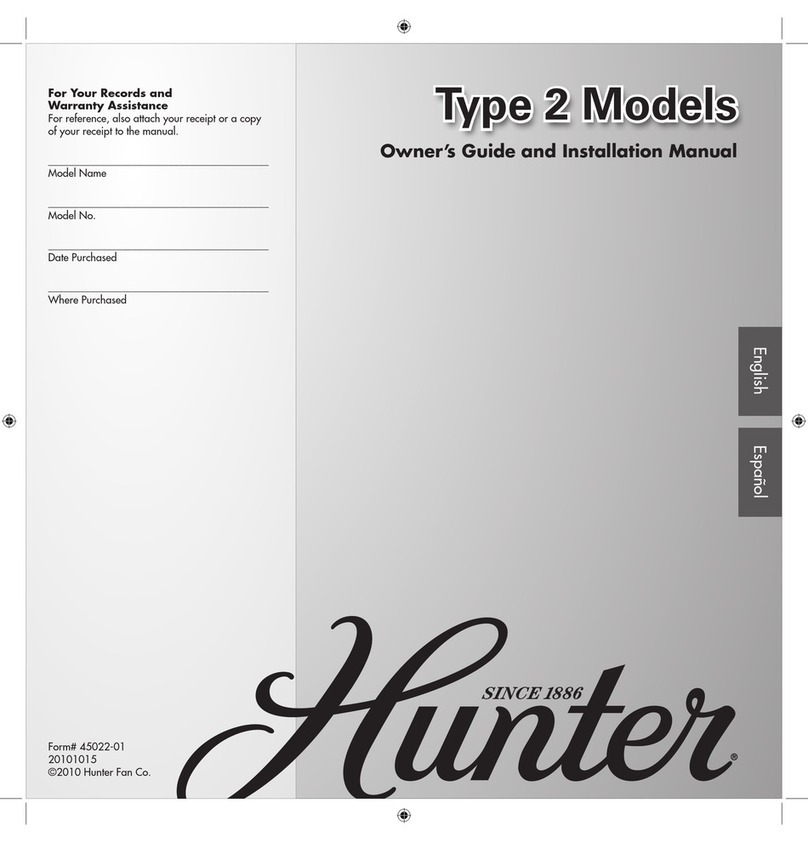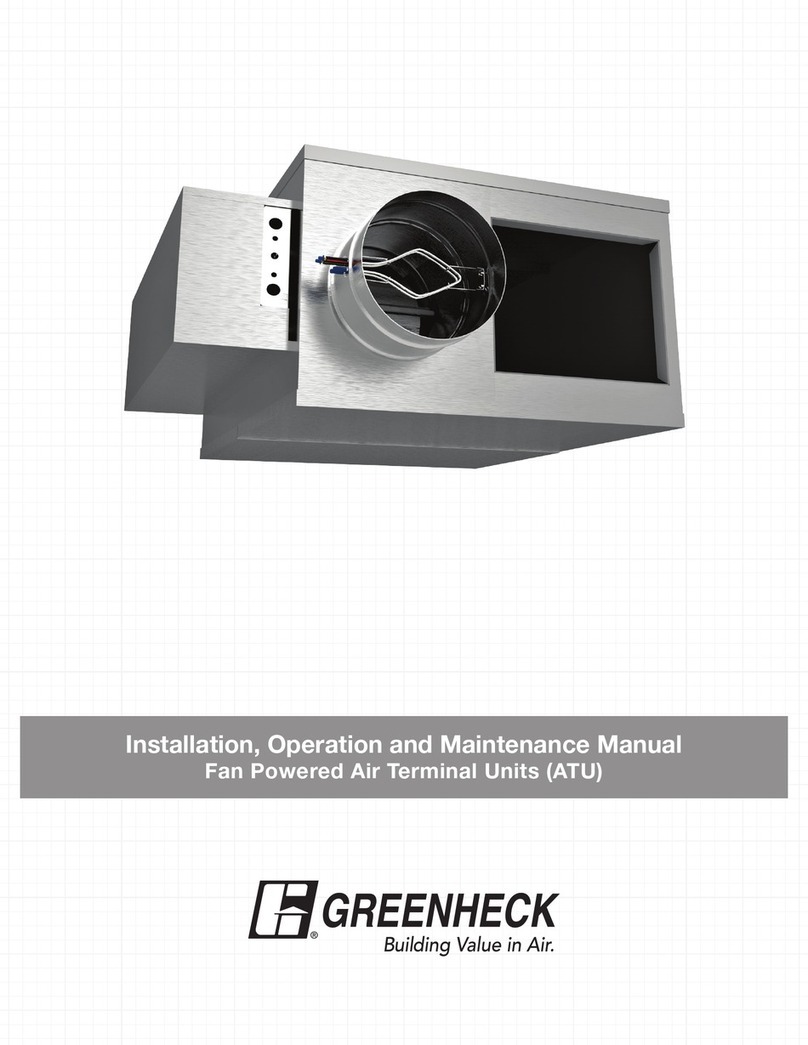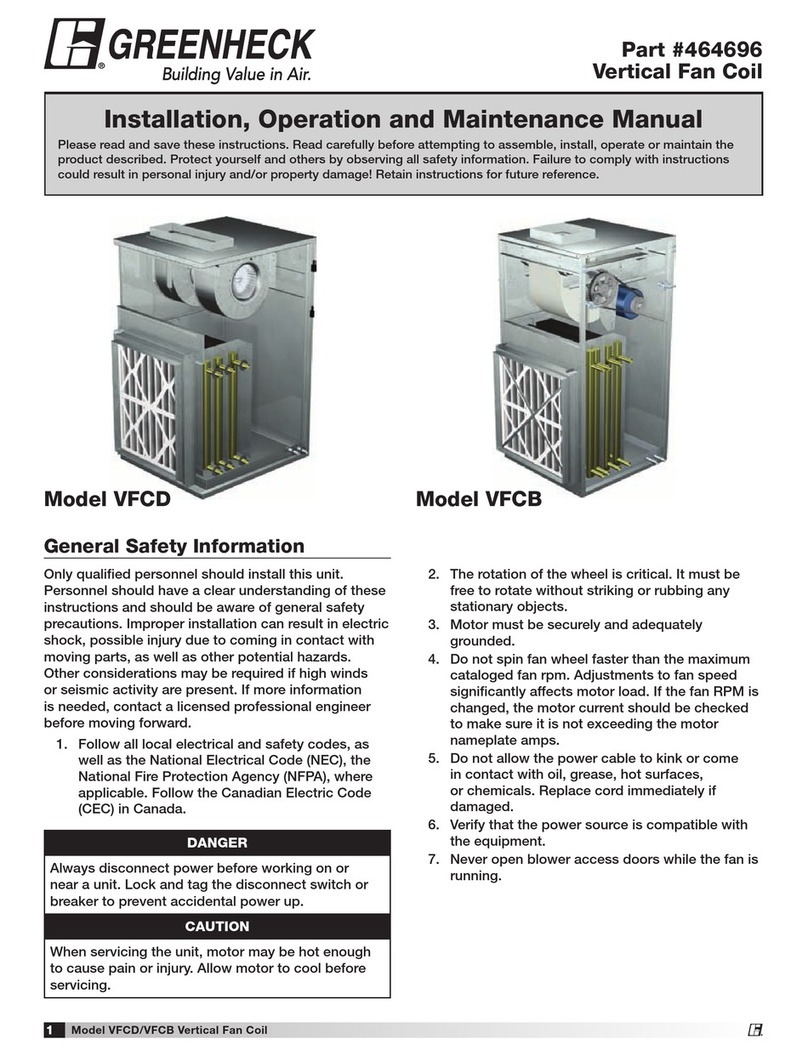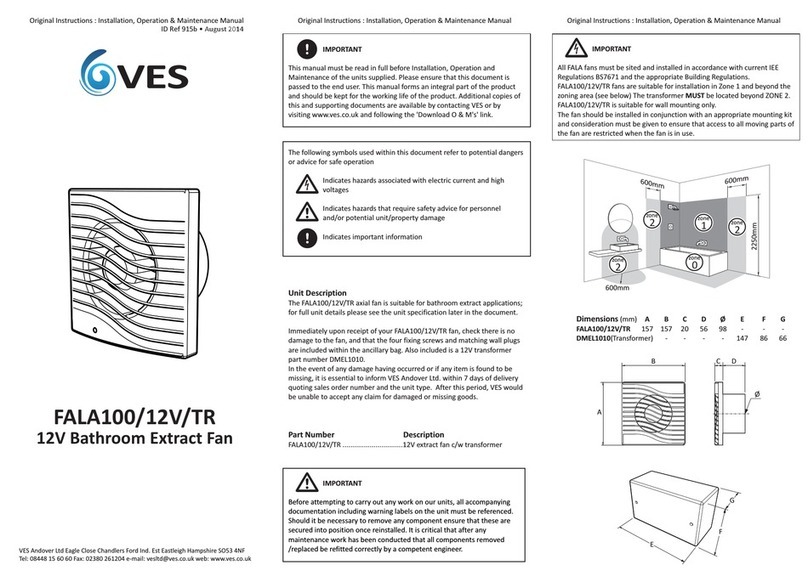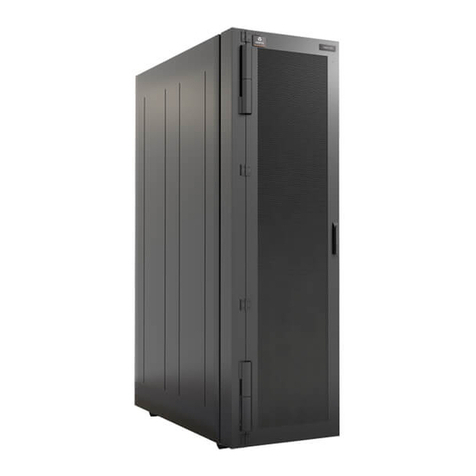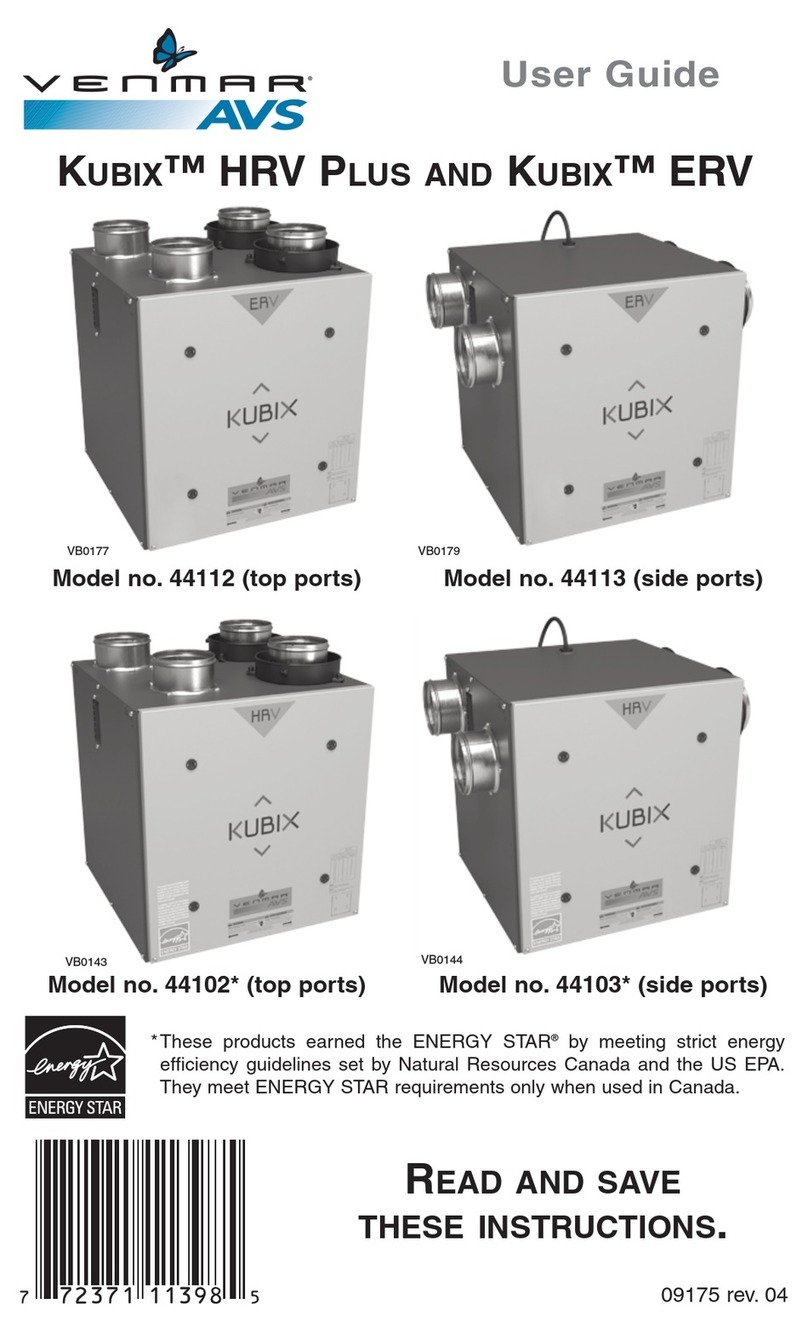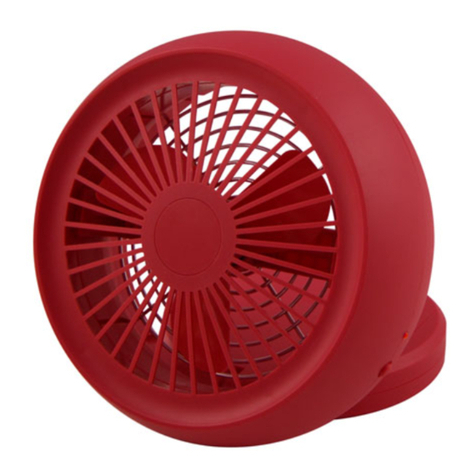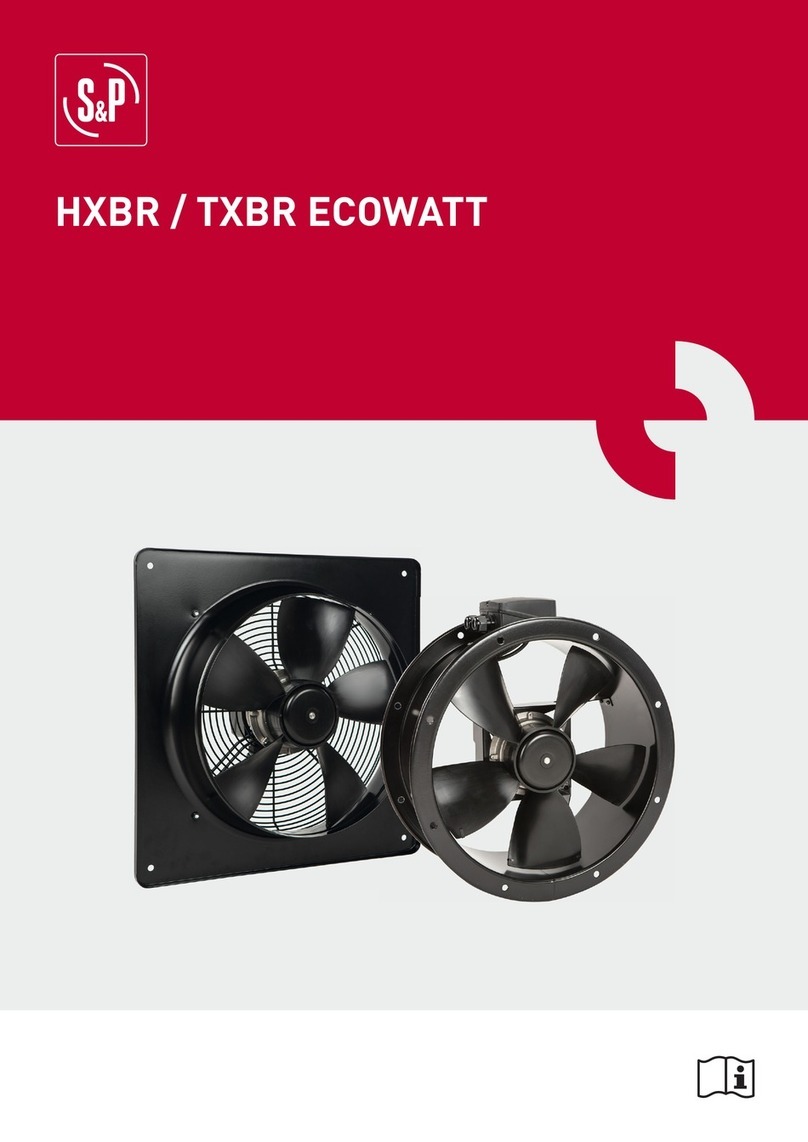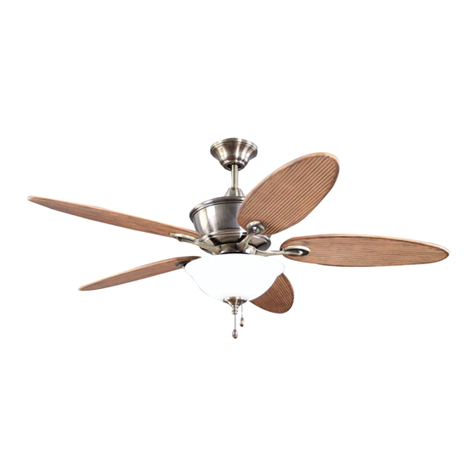TYPICAL HIGH TEMPERATURE APPLICATIONS
Model TBI / TBIRU fans are ideal for
applications involving elevated temperatures.
Designed with the propeller on the discharge
end of the fan, a negative pressure is created
in the belt tube during operation. Ambient air is
drawn in through the belt tube and cools the
belts and bearings.
For the greatest amount of internal cooling,
discharge static pressure should be kept to a
minimum while keeping most of the pressure
on the inlet side. Locate the fan at ends of the
duct runs and near the discharge point in the
system. This set-up will promote the ambient
air cooling effect.
OPERATION
ELECTRICAL CONNECTIONS
Before electrical connections are made, the supply voltage, phase and ampere capacity must be checked for compatibility
with the fan motor. In addition, the supply wiring must be properly fused and conform to local and national electrical codes.
The supply wires are then connected to an optional safety disconnect switch (if supplied) or wired directly to the motor.
PRE-START UP CHECKS
1. Check all fasteners for tightness.
2. Prop rotation should be in the same direction as the rotation decal affixed to the unit. For 3-phase installations, fan
rotation can be reversed by simply interchanging any two of the three electrical leads. For single phase installations,
follow the wiring diagram located on the motor.
3. Adjustable motor pulleys are preset at the factory for the specified fan RPM. Fan speed can be increased by closing or
decreased by opening the adjustable pulley. Two or three groove variable pitch pulleys must be adjusted an equal
number of turns open or closed.
Note: Any increase in fan speed represents a substantial increase in horsepower required from the
motor. Always check motor load amperage and compare to name plate rating when changing fan speed.
MAINTENANCE
Once the fan has been put into operation, a periodic maintenance program should be set up to preserve the reliability and
performance of the fan. Items to be included in this program are:
• BEARINGS • SET SCREWS • BELTS
• LUBRICATION • FASTENERS • REMOVAL OF DUST/DIRT
BEARINGS
Bearings are the most critical moving part of the fan and should be inspected at periodic intervals. Locking collars and set
screws, in addition to fasteners attaching the bearing to the bearing plate, must be checked for tightness. In a clean
environment and temperature above 32ºF and below 200ºF, fan shaft bearings with grease fittings should be lubricated semi-
annually using a high quality lithium based grease. If unusual environmental conditions exist such as temperatures below 32º
F and above 200ºF, moisture or contaminants, more frequent lubrication is required.
With the unit running, add grease very slowly with a manual grease gun until a slight bead of grease forms at the seal. Be
careful not to unseat the seal by over lubricating or using excessive pressure. Bearings without grease fittings are lubricated
for life.
